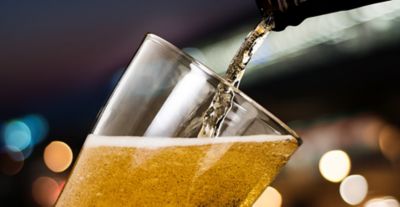Because of its inert, colorless and odorless characteristics, it is used to displace or replace the air to reduce the risk of deterioration of the properties of the end product. In fruit juices for example the oxidation of vitamin C is perhaps one of the most decisive factors. The use of nitrogen in tanks, containers, pipes and bottles prevents this oxidation from taking place. To remove the oxygen dissolved in the juice, nitrogen is passed through the liquid, forming bubbles who carry the oxygen, which is than extracted from the juice. In wine making industry, nitrogen is used to prevent oxidation which allows to use of less additives. Also the acidity, color, aromas and natural flavor of the wine will be well conserved. The use of nitrogen will allow a longer storage time without alteration of the primary quality of the wine. Nitrogen is practically insoluble in water and therefore is ideal to transfer the wine. To ensure maximum hygiene the bottles are washed and dried with nitrogen before filling. The drying goes faster than with normal air because the production process of the on site nitrogen generator makes it a very dry gas. And finally the bottle, after filling and before placing the cork, is purged with nitrogen to avoid the presence of residual air in the neck of the bottle.




